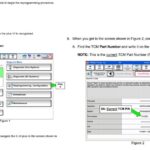Device IDs, often referred to as “Devids,” are crucial for identifying and managing hardware components in a Windows operating system. This article delves into the intricacies of Windows device IDs, including Plug and Play IDs, generic device IDs, and device type codes. Understanding these identifiers is essential for troubleshooting, driver installation, and system administration.
Understanding Device IDs (Devids)
Every hardware component within a Windows system is assigned a unique device ID. This ID allows the operating system to recognize the hardware and load the appropriate drivers. These “devids” come in various forms, each serving a specific purpose.
Plug and Play Device IDs
Plug and Play (PnP) technology simplifies hardware installation by automatically detecting and configuring devices. Each PnP device has a Vendor ID and a Device ID. The Vendor ID identifies the manufacturer, while the Device ID specifies the particular product. Non-BIOS enumerated devices should not utilize “PNP” within their Vendor and Device codes. Manufacturers must register with EISA to receive an assigned vendor code. Microsoft reserves the “PNP” vendor code for defining a device’s Compatible ID, used to indicate compatibility with standard drivers provided with Windows.
For example, a “Standard PC COM Port” might have a Compatible ID of “PNP0500.” This allows Windows to automatically use the default driver for this common device type. Multifunction adapters should utilize an INF file to specify the correct drivers for all devices on the adapter, preventing repeated driver requests during installation.
Windows Generic Device IDs (Devids)
Many devices lack a standard EISA ID, such as interrupt controllers or keyboard controllers. Microsoft uses the “PNP” prefix to designate these devices and define compatibility groups. These generic devids categorize devices into system devices (PNP0xxx), network adapters (PNP8xxx), SCSI and proprietary CD adapters (PNPAxxx), sound and multimedia devices (PNPBxxx), and modems (PNPCxxx-Dxxx).
Specific examples include:
- PNP0000: AT Interrupt Controller
- PNP0300: IBM PC/XT keyboard controller (83-key)
- PNP0500: Standard PC COM port
- PNP8001: Novell/Anthem NE3200 Network Adapter
- PNPA002: Future Domain 16-700 compatible SCSI controller
- PNPB003: Sound Blaster 16-compatible sound device
Device Type Codes
Device type codes provide a broader classification of hardware based on their functionality. These codes consist of a Base Type and a Sub-Type, further categorized by Interface Type.
For instance:
- Base Type 1 (Mass Storage Device): Includes sub-types for SCSI controllers, IDE controllers, and floppy controllers.
- Base Type 2 (Network Interface Controller): Encompasses sub-types for Ethernet, Token Ring, and FDDI controllers.
- Base Type 7 (Communications Device): Includes sub-types for RS-232 devices and parallel ports.
Conclusion
Understanding devids – Device IDs and Type Codes – is fundamental for effective hardware management in Windows. These identifiers enable the operating system to correctly identify hardware, load appropriate drivers, and ensure proper functionality. Knowing how to interpret these codes can greatly assist in troubleshooting hardware issues and managing system resources.

